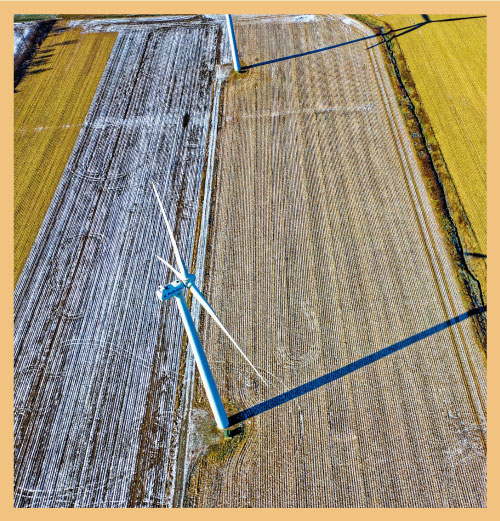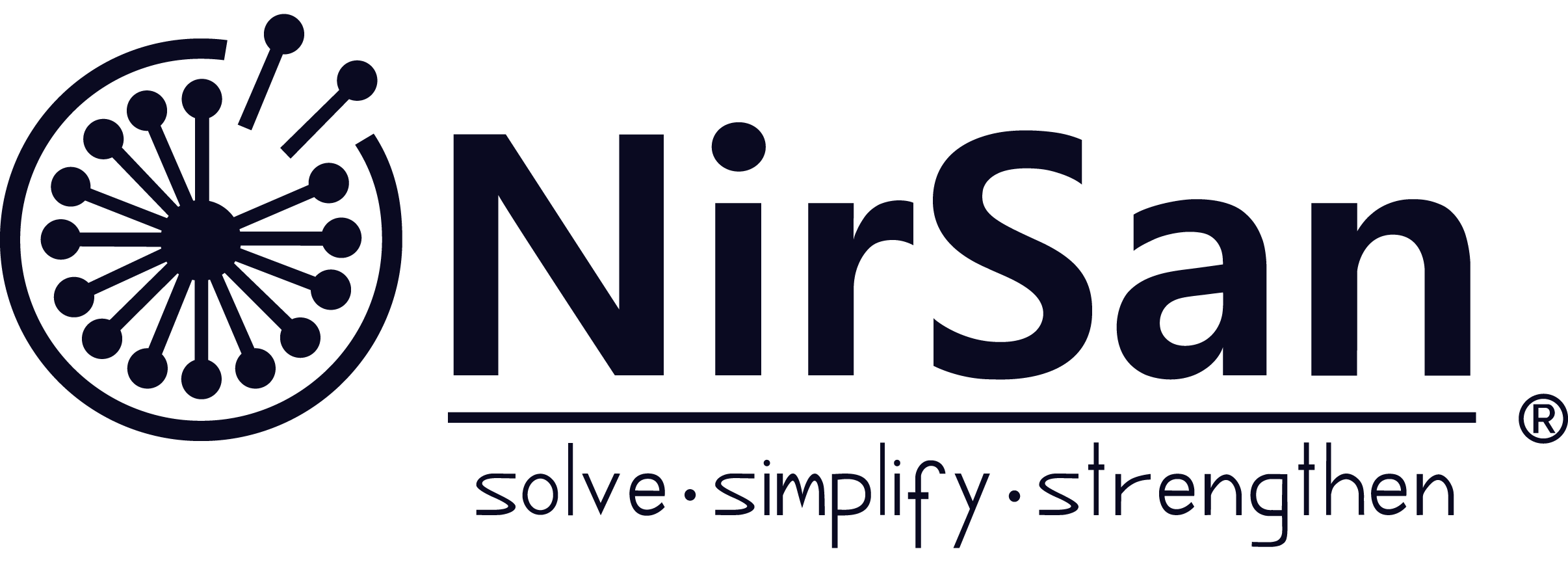
What is OPEREFT®?

Budgeting is probably the only process within an enterprise that can be described as its backbone process. It is inextricably linked to and materially influences a wide range of processes including operations planning, performance management, and marketing execution. It invariably starts out the company’s performance cycle, and plays a seminal role in keeping performance on track. OPEREFT® provides you with an incisive and multifaceted assessment of the quality of your budgeting process, and identifies aspects that need strengthening. OPEREFT® believes that the budgeting process reflects choices made by leaders along six dimensions: orientation, emphasis, dynamics, refinement, aggregation and interactivity. OPEREFT® makes explicit these choices, allowing you to reconsider and modify, or further emphasise.
Budgeting can be credibly described as a backbone process. It influences several processes including operations planning, performance management, and marketing execution. It initiates the performance cycle, and plays a seminal role in keeping performance on track. OPEREFT® provides an incisive and multifaceted assessment of your budgeting process. OPEREFT® believes that budgeting reflects choices along six dimensions: orientation, emphasis, dynamics, refinement, aggregation and interactivity. OPEREFT® makes explicit these choices, allowing you to reconsider, or further emphasise.
Budgeting can be credibly described as a backbone process. It influences several processes including operations planning, performance management, and marketing execution. It initiates the performance cycle, and plays a seminal role in keeping performance on track. OPEREFT® provides an incisive and multifaceted assessment of your budgeting process. OPEREFT® believes that budgeting reflects choices along six dimensions: orientation, emphasis, dynamics, refinement, aggregation and interactivity. OPEREFT® makes explicit these choices, allowing you to reconsider, or further emphasise.
Budgeting can be credibly described as a backbone process. It influences several processes including operations planning, performance management, and marketing execution. It initiates the performance cycle, and plays a seminal role in keeping performance on track. OPEREFT® provides an incisive and multifaceted assessment of your budgeting process. OPEREFT® believes that budgeting reflects choices along six dimensions: orientation, emphasis, dynamics, refinement, aggregation and interactivity. OPEREFT® makes explicit these choices, allowing you to reconsider, or further emphasise.
Why worry about your "budgeting process"? Why get OPEREFT®?
Large organisations have well cast budgeting processes reflecting the folk wisdom of generations of preceding leaders. In smaller organisations, the process is an evolving one, likely to undergo modifications every few years. Irrespective of scale, the budgeting process is a reflection of how the organisation’s leaders view the task of running an enterprise and creating value. When these choices are not explicitly outlined, it results in poor comprehension of process objectives and patterns of routine behaviour, robbing the process of mindfulness and intensity, and eventually leading to average quality and subpar outputs. OPEREFT® calls out implicit choices, or the lack of choices altogether. Get OPEREFT® to shake, recast and strengthen your budgeting process, through the injection of mindfulness and intensity.
Large organisations have budgeting processes that reflect the folk wisdom of generations of leaders. In smaller organisations, the process is likely to undergo modifications every few years. Irrespective of scale of the organisation, the budgeting process reflects how the organisation’s leaders run an enterprise and create value. When choices are not made explicit, it robs the budgeting process of mindfulness and intensity, leading to subpar outputs. Get OPEREFT® to call out implicit choices or the lack of choices altogether, and to shake and strengthen your budgeting process through mindfulness and intensity.
Large organisations have budgeting processes that reflect the folk wisdom of generations of leaders. In smaller organisations, the process is likely to undergo modifications every few years. Irrespective of scale of the organisation, the budgeting process reflects how the organisation’s leaders run an enterprise and create value. When choices are not made explicit, it robs the budgeting process of mindfulness and intensity, leading to subpar outputs. Get OPEREFT® to call out implicit choices or the lack of choices altogether, and to shake and strengthen your budgeting process through mindfulness and intensity.
Large organisations have budgeting processes that reflect the folk wisdom of generations of leaders. In smaller organisations, the process is likely to undergo modifications every few years. Irrespective of scale of the organisation, the budgeting process reflects how the organisation’s leaders run an enterprise and create value. When choices are not made explicit, it robs the budgeting process of mindfulness and intensity, leading to subpar outputs. Get OPEREFT® to call out implicit choices or the lack of choices altogether, and to shake and strengthen your budgeting process through mindfulness and intensity.

Who will benefit from OPEREFT®?

Leaders of performance units are significant beneficiaries of OPEREFT®, for two reasons. First, they can now model the budgeting process based on explicit choices they make about different aspects of the process. Second, the added intensity in the process will lead to greater engagement of interested parties, better decision making and heightened performance accountability. Owners and allocators of financial and people resources benefit from greater clarity in the resource allocation methodology and cost-benefit rationale. Given that the budgeting process has material influence on downstream processes, the other beneficiaries of OPEREFT® include, derivatively, organisation leaders responsible for driving performance management, operations planning, and marketing planning and execution.
OPEREFT® benefits leaders of performance units. First, they are now able to model the budgeting process based on explicit choices they make about different aspects of budgeting. Second, the added intensity of the process leads to better engagement, decision making and performance accountability. Allocators of resources benefit from greater clarity in the resource allocation methodology and cost-benefit rationale. Other beneficiaries of OPEREFT® include organisation leaders responsible for downstream processes such as performance management, operations planning, and marketing planning and execution.
OPEREFT® benefits leaders of performance units. First, they are now able to model the budgeting process based on explicit choices they make about different aspects of budgeting. Second, the added intensity of the process leads to better engagement, decision making and performance accountability. Allocators of resources benefit from greater clarity in the resource allocation methodology and cost-benefit rationale. Other beneficiaries of OPEREFT® include organisation leaders responsible for downstream processes such as performance management, operations planning, and marketing planning and execution.
OPEREFT® benefits leaders of performance units. First, they are now able to model the budgeting process based on explicit choices they make about different aspects of budgeting. Second, the added intensity of the process leads to better engagement, decision making and performance accountability. Allocators of resources benefit from greater clarity in the resource allocation methodology and cost-benefit rationale. Other beneficiaries of OPEREFT® include organisation leaders responsible for downstream processes such as performance management, operations planning, and marketing planning and execution.
Where (in which settings) should you get OPEREFT®?
Get OPEREFT® if your budgeting process is challenged on any of the following six factors. First is ‘inertia’: the process has remained unchanged for a while, and needs a relook in light of changing internal and environmental circumstances. Second is ‘consistency’: you find inconsistent assumptions and approaches in the upstream, midstream and downstream stages. Third is ‘intensity’: you feel a need to inject intensity in the process to raise engagement, quality and accountability. Fourth is ‘objectives’: you remain unconvinced about the quality of business goals and budget objectives set at the outset. Fifth is ‘uniformity’: you notice material differences in the process followed by different units. Sixth is ‘connectivity’: budgetary output is not sufficiently incorporated and processed in downstream processes.
Get OPEREFT® if your budgeting process is challenged by any of the following six factors. First, ‘inertia’: the budgeting process has remained unchanged, and needs a relook due to internal and environmental flux. Second, ‘consistency’: you find inconsistent assumptions and approaches in budgeting. Third, ‘intensity’: there is a need for intensity to raise engagement, quality and accountability. Fourth, ‘objectives’: budget goals and objectives are unconvincing. Fifth, ‘uniformity’: the process differs across organisation units. Sixth, ‘connectivity’: budgetary output is not sufficiently incorporated by downstream processes.
Get OPEREFT® if your budgeting process is challenged by any of the following six factors. First, ‘inertia’: the budgeting process has remained unchanged, and needs a relook due to internal and environmental flux. Second, ‘consistency’: you find inconsistent assumptions and approaches in budgeting. Third, ‘intensity’: there is a need for intensity to raise engagement, quality and accountability. Fourth, ‘objectives’: budget goals and objectives are unconvincing. Fifth, ‘uniformity’: the process differs across organisation units. Sixth, ‘connectivity’: budgetary output is not sufficiently incorporated by downstream processes.
Get OPEREFT® if your budgeting process is challenged by any of the following six factors. First, ‘inertia’: the budgeting process has remained unchanged, and needs a relook due to internal and environmental flux. Second, ‘consistency’: you find inconsistent assumptions and approaches in budgeting. Third, ‘intensity’: there is a need for intensity to raise engagement, quality and accountability. Fourth, ‘objectives’: budget goals and objectives are unconvincing. Fifth, ‘uniformity’: the process differs across organisation units. Sixth, ‘connectivity’: budgetary output is not sufficiently incorporated by downstream processes.

How does OPEREFT® work?

The design of OPEREFT® is based on its proprietary framework called HEXAMAT. With OPEREFT®, you will undergo the four stages of ‘installation’, ‘engagement’, ‘analysis’ and ‘dissemination’ over eight weeks. To install OPEREFT®, you will outline factors along which the budgeting process is most challenged; establish scope of the research exercise by identifying performance units that will serve as subjects; and nominate respondents for the research. OPEREFT® will engage with the respondents and relevant organisational records. Inputs thus obtained will be analysed on the basis of the product’s proprietary framework. Subsequently, the research output of OPEREFT® will be made available to the organisation leadership, and will comprise quantitative analysis as well as descriptive and qualitative accounts.
The design of OPEREFT® is based on our proprietary framework called HEXAMAT. The ‘installation’, ‘engagement’, ‘analysis’ and ‘dissemination’ stages take place over eight weeks. To install the product, you outline factors that challenge the budgeting process the most; establish scope by identifying performance units that will serve as subjects; and nominate the respondents for the research. OPEREFT® engages with respondents and relevant records, and analyses the input. The OPEREFT® output for the organisation leadership comprises quantitative analysis as well as descriptive and qualitative accounts.
The design of OPEREFT® is based on our proprietary framework called HEXAMAT. The ‘installation’, ‘engagement’, ‘analysis’ and ‘dissemination’ stages take place over eight weeks. To install the product, you outline factors that challenge the budgeting process the most; establish scope by identifying performance units that will serve as subjects; and nominate the respondents for the research. OPEREFT® engages with respondents and relevant records, and analyses the input. The OPEREFT® output for the organisation leadership comprises quantitative analysis as well as descriptive and qualitative accounts.
The design of OPEREFT® is based on our proprietary framework called HEXAMAT. The ‘installation’, ‘engagement’, ‘analysis’ and ‘dissemination’ stages take place over eight weeks. To install the product, you outline factors that challenge the budgeting process the most; establish scope by identifying performance units that will serve as subjects; and nominate the respondents for the research. OPEREFT® engages with respondents and relevant records, and analyses the input. The OPEREFT® output for the organisation leadership comprises quantitative analysis as well as descriptive and qualitative accounts.
When during the operating year should you get OPEREFT®?
OPEREFT® is designed for biennial as well as episodic usage. OPEREFT® requires eight weeks for the ‘installing’, ‘engaging’, ‘analysing’ and ‘disseminating’ phases. When using OPEREFT® on a biennial calendar, we recommend usage during the fourth or first quarters, for multiple reasons. First, the research gets conducted just prior to the onset of next year's budgeting. Its output can be fully and conveniently incorporated into the process. Second, the research benefits from inputs from all stages of the nearly concluded budgeting cycle. Third, respondents have now gone through the emotionally and intellectually intense mid-stream stages of the budgeting cycle, and have the bandwidth to participate in the research. When using OPEREFT® episodically, we do not recommend a preferred timing.
OPEREFT® is designed for biennial as well as episodic usage. When using biennially, we recommend product usage during the fourth or first quarter. The research then gets conducted before the onset of next year's budgeting, and the output can be fully incorporated. Moreover, the research benefits from the recently concluded budgeting cycle for the current year. Third, respondents by now have gone through the emotionally and intellectually intense mid-stream stages of budgeting, and have bandwidth to participate in the research. When using OPEREFT® episodically or for the first time, there is no preferred timing.
OPEREFT® is designed for biennial as well as episodic usage. When using biennially, we recommend product usage during the fourth or first quarter. The research then gets conducted before the onset of next year's budgeting, and the output can be fully incorporated. Moreover, the research benefits from the recently concluded budgeting cycle for the current year. Third, respondents by now have gone through the emotionally and intellectually intense mid-stream stages of budgeting, and have bandwidth to participate in the research. When using OPEREFT® episodically or for the first time, there is no preferred timing.
OPEREFT® is designed for biennial as well as episodic usage. When using biennially, we recommend product usage during the fourth or first quarter. The research then gets conducted before the onset of next year's budgeting, and the output can be fully incorporated. Moreover, the research benefits from the recently concluded budgeting cycle for the current year. Third, respondents by now have gone through the emotionally and intellectually intense mid-stream stages of budgeting, and have bandwidth to participate in the research. When using OPEREFT® episodically or for the first time, there is no preferred timing.

© Copyright 2019  All rights reserved.
All rights reserved.
© Copyright 2019  All rights reserved.
All rights reserved.
© Copyright 2019  All rights reserved.
All rights reserved.
© Copyright 2019  All rights reserved.
All rights reserved.
